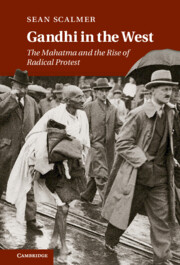5 - The experimenters
Published online by Cambridge University Press: 03 May 2011
Summary
In the middle of the twentieth century, the Gandhians of the West finally took to the field. No longer content to talk, meditate, read, or propose, they began their own experiments with satyagraha. Across the United States, students of the Mahatma challenged racial segregation in swimming pools and diners, roller rinks and barbershops. American pacifists marched from Ohio to the Atlantic in the cause of peace. Their British counterparts lay down on footpaths and squatted at military gates.
They were unlikely rebels: sandal-wearers with soft hands, initially deferential to authority, perhaps too quick to turn the other cheek. Surviving photographs disclose thin men with spectacles and prim women in buttoned blouses. Their faces suggest only the most timorous challenge, as earnest entreaty vies with respectable deference. And their words bespeak of a hesitancy before the precipice.
Historians have seldom recalled the adventures of this diffident crew. Their campaigns enrolled few converts. Onlookers were baffled more often than inspired; newspapermen rarely scribbled down the details of their strange dissent. These timid radicals could point to hardly any public achievements of lasting or general import. By the close of the 1950s, even their most celebrated victories would be overshadowed by later campaigns. By the end of the next decade, they seemed but a grey symbol of a more conformist and straitened age.
- Type
- Chapter
- Information
- Gandhi in the WestThe Mahatma and the Rise of Radical Protest, pp. 137 - 166Publisher: Cambridge University PressPrint publication year: 2011

